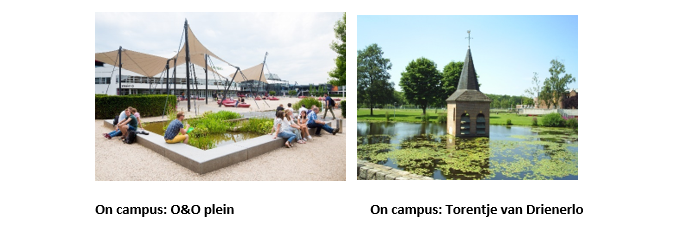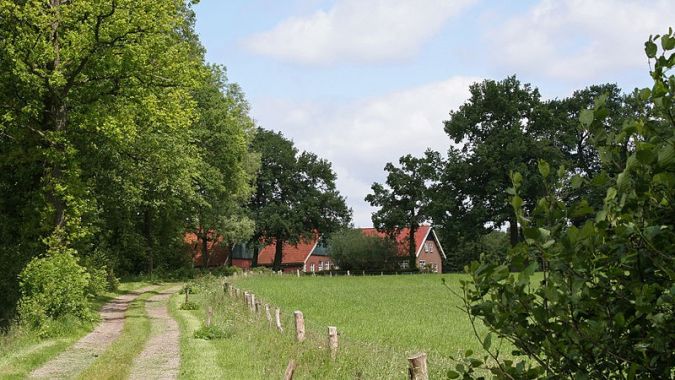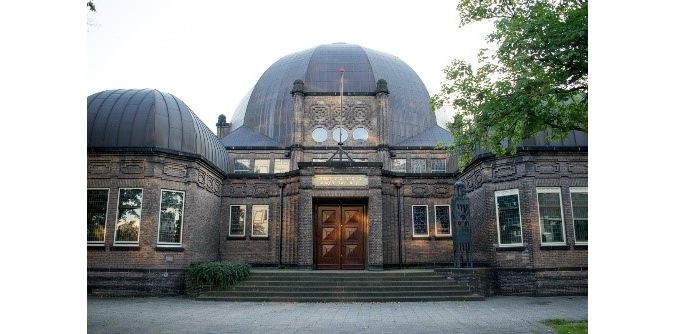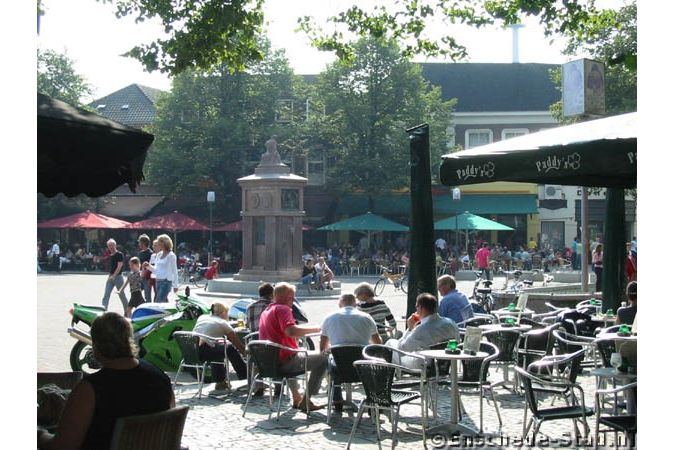The Conference Venue: University of Twente Campus
The ISPRS Geospatial Week 2019 will be held on the University of Twente campus. The University of Twente (UT) is the only university in the Netherlands with a genuine campus. It is set in extensive parkland that houses buildings for education and research, facilities for sports and culture, student and staff accommodation and a shopping centre. The ISPRS Geospatial Week will take place in some of the buildings on the so-called ‘O&O plein’ (‘Education & Research Square’), such as the Hal B/Waaier and Carré buildings. The buildings on the O&O plein are located close together, connected by pedestrian walkways.
In fact, the campus is a compact academic city located on the verdant Drienerlo estate. The buildings that have been erected there over the past half century are among the finest examples of recent architectural thinking. The campus was laid out in 1962 according to the principles of modern architecture or ‘New Objectivity’. The master plan imposed a clear structure on the site, with large buildings at strategic points, and separated residential space from work and recreation facilities.
The University of Twente profiles itself as an enterprising research university. It provides education and conducts research in areas ranging from psychology and management to applied physics and biomedical technology. The core research areas are technology, medical innovation, nanotechnology and behaviour and society. Current enrolment numbers 10,000 students, of which 2,500 are international students. The university employs a staff of 3,000, making it the largest employer in Twente. The entrepreneurial character of the university is manifested in the large number of spin-off businesses it hosts.

Just a short walk from the O&O plein where the ISPRS Geospatial Week will be held, you will find the U Parkhotel, which opened its doors last February. The building is one of the oldest on the campus, and used to house the faculties of electrical engineering and physics. It now houses not only the U Parkhotel with 72 hotel rooms, a large restaurant and meeting rooms, but also more than 400 student rooms, mainly for international students.
Travel to Enschede and the University of Twente
By air, Enschede is easiest to reach by flying into Amsterdam Airport Schiphol, the largest airport in the Netherlands. An intercity train departs for Enschede directly from within the Schiphol terminal building every half hour, with the journey taking about two hours. Enschede is the final stop on the line. Note that only every other train goes directly to Enschede, with the others requiring a change in Amersfoort. When you arrive at the train station in Enschede, take bus line 1 to ‘Universiteit Twente’. There are several bus stops on the campus. An alternative option is to change trains in Hengelo and travel onwards with a regional train to the Enschede Kennispark railway station. This station is located within walking distance (about 1km) of the University of Twente’s main entrance.
Alternatively, you could rent a car at Amsterdam Airport Schiphol from one of the many rental companies. Take the A1 and then A35 motorways towards Enschede, until exit no. 26 (Enschede-West/Universiteit). Follow the signs for ‘Universiteit’. There are a number of car parks on the university campus which are all free of charge. If you are thinking of renting a car, it would be easiest to book a hotel room at a Van der Valk Hotel, either in Hengelo or Enschede. These hotels are both situated close to the motorway.
The following hotels have been reserved for the Geospatial Week:
| U Parkhotel | located on the university campus |
| De Broeierd | located opposite the university campus |
| InterCity Hotel | located in Enschede town centre opposite railway/bus station |
| ITC International Hotel | located in Enschede town centre, close to railway/bus station |
| Van der Valk | located on the edge of Enschede, close to the A35 motorway |
| City Hotel | located on the edge of Hengelo, close to the A1 motorway |
| Van der Valk | located on the edge of Hengelo, close to the A1 motorway |
For those staying at Van der Valk Hengelo, City Hotel Hengelo or Van der Valk Enschede, there will be shuttle buses between the conference venue and the hotels.
You can also travel from Hengelo and Enschede railway stations by regular bus service as follows:
From Hengelo railway station take either bus 8 or 9 to Enschede, which stops on the main road close to the main entrance to the university campus.
From Enschede railway station take either bus 1 to Universiteit Campus or bus 8 or 9 to Hengelo, which stops on the main road close to the main entrance to the campus
From Enschede Kennispark railway station take bus 1 to Universiteit Campus.
Twente region
Although Twente is the most urbanized part of the province of Overijssel, it is renowned for its scenic countryside. This is sometimes characterized as a bocage landscape, attracting many tourists from other parts of the country, with popular sights including the Lutterzand on the meandering Dinkel, or the wide heather fields on the Friezenberg near Markelo. Twente is bisected from north to south by a range of hills in western Twente (Holterberg, Rijsserberg, Friezenberg, Nijverdalse Berg, Hellendoornse Berg), and hills in the east, with the Tankenberg near Oldenzaal being the highest point. The towns of Ootmarsum, and Oldenzaal to a lesser extent, are known for their scenic historical buildings, the latter of which has a noteworthy Romanesque church called Oale Grieze (the ‘Old Grey’ or Plechelmus), which is the oldest Romanesque church in the Netherlands.
Since Twente’s economy is to a great extent reliant on agriculture, this leaves its marks on the landscape, with lots of meadows and pastures alternating with undergrowth, scrubs and copses. There are several fens, marshes and peat bogs, which long made Twente less accessible for the rest of the Netherlands, and which formed some natural defence. It also made the inhabitants of Twente incline towards the east (Westphalia and Münster, more precisely) in trade, politics and fashion, rather than to the more western parts of the Netherlands.

Geologically, Twente is one of the most interesting areas of the Netherlands. It has strata (earth layers) from various eras concentrated in a relatively small area. There is an open stone quarry at Losser, while there are several salt mines at Hengelo and Boekelo. The western Twente town of Nijverdal is the only place in the Netherlands where gold was ever found.
Enschede
Directly on the Eastern border of the Netherlands lies Enschede, a characteristic, modern and lively university town. Elegant historic buildings in the town and surrounding area evocative of Enschede’s rich textile past. Some of the town’s most notable monuments are the beautiful town hall, several churches and a unique synagogue.
At the same time, large-scale urban renewal has given Enschede a new skyline with eye-catching, contemporary architecture. Well worth a visit is the ‘Van Heekplein’ shopping centre which gives the town a modern flair and a lively charm.
Besides the familiar large department stores, a number of specialist shops have also established themselves around Van Heekplein square, making Enschede the ultimate shopping city of the east. Enschede also has a lot to offer for those who enjoy culture, wining & dining and a night on the town.

There is something for everyone in and around the convivial Oude Markt (‘old market square’). Enschede definitely caters to music lovers; whether you enjoy opera, rock, jazz or Tchaikovsky, Enschede has it all. Enschede also has a number of museums that are well worth a visit.
Every Tuesday and Saturday is market day on the newly modernized Van Heekplein. On Saturday, the busiest day, there are no less than 160 market stalls, making Enschede’s goods market the largest in the Eastern Netherlands. Here you can find the widest range of products imaginable: not only fresh fruit and vegetables, meat and fish, but also leather goods, clothes and Mediterranean delicacies.
Enschede’s fame is mainly thanks to the textile industry which started out as small-scale spinning and weaving of linen and home-grown flax on the farm for personal use. Gradually, workplaces emerged with workers on the payroll. When the steam engine was introduced around 1836 thanks to the Englishman Thomas Ainsworth, these workplaces were turned into real factories with increasing production. If you would like to find out more about Enschede’s famous textile history, the museum called ‘De Museumfabriek’ in the new district of Roombeek is well worth a visit.
On 13 May 2000, the fireworks disaster occurred, killing 23 people and injuring nearly a thousand more. The old district of Roombeek was rebuilt in the subsequent years. Nowadays, it is a modern district with many different architectural styles, but also the small houses of the textile workers were rebuilt in order not to forget its past.


Value staying current with geomatics?
Stay on the map with our expertly curated newsletters.
We provide educational insights, industry updates, and inspiring stories to help you learn, grow, and reach your full potential in your field. Don't miss out - subscribe today and ensure you're always informed, educated, and inspired.
Choose your newsletter(s)












